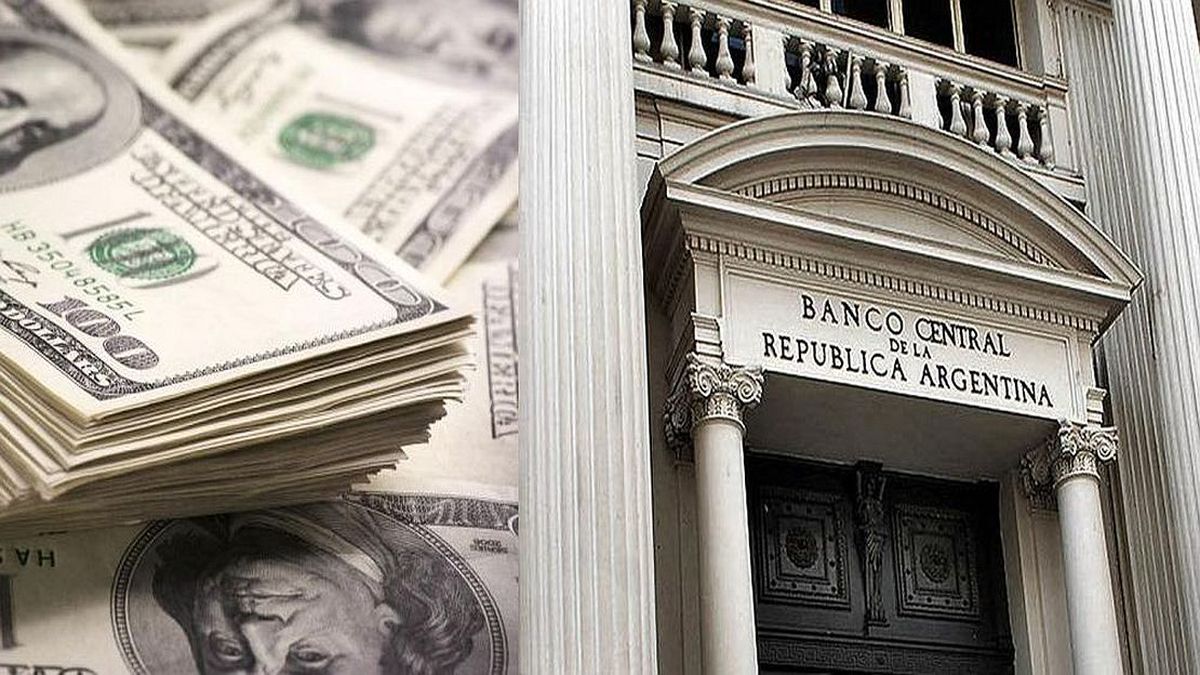A few months before the presidential election, Argentina finds itself in a delicate economic situation: high inflation, economic slowdown, scarce reserves in the Central Bank (BCRA), exchange pressures and high interest rates.
The country must choose presidential candidates in the primary elections to be held in August, ahead of the general elections in October, so that the new president assumes power on December 10.
Private estimates place inflation above 7.5% for April, at a time when the country is once again renegotiating goals with the International Monetary Fund (IMF). within the framework of a loan for some US$44,000 million, when new restrictions limit access to foreign currency in alternative places in order to curb portfolio dollarization.
“The cost of ‘arriving’ at the elections without turbulence will be assuming the costs associated with emergency measures and feeding certain distortions/imbalances that will increase the challenges of the economic policy of the next administration in its search to disarm exchange controls, unify exchange rates and stabilize,” said the consultancy Ecolatina.
“The famous phrase “whatever it takes” (whatever it takes) by Mario Draghi, former president of the European Central Bank, could be an eloquent summary of the recent actions of the (Argentine) government in economic matters”said GMA Capital Research.
“The Ministry of Economy and the central bank used all the tools at their disposal: market operations with bonds and with reserves -the IMF was warned-, sale of futures, acceleration of the ‘crawling peg’ and an adjustment of 1,000 basis points of the interest rate. The effectiveness of the measures will be seen over the days, although the fate of inflation in the coming months seems to be cast”.
On “Tuesday, a super trap on the ‘CCL’ (bond operation called ‘cash with liquidation’ to dollarize portfolios) begins, it seems that it will not be easy to buy, the ‘blue’ super (dollar) enters the scene,” said the analyst Salvador Distefano.
“The Government adopted “orthodox” measures -raise rates, sell dollars, etc- to stop the rise in financial exchange rates. The measures were moderately successful as the gap narrowed to 103%, albeit at the cost of validating higher nominality and shedding scarce currency,” Delphos Investment said.
Central Bank.jpg
“The BCRA closed April with a positive balance of barely 33 million dollars with sales in the official market of 50 million in this (last) week,” he recalled.
“Absolutely all the macro fundamentals are much more deteriorated than in previous currency crises. The BCRA’s purchases continue to turn on a red light and the net reserves are completely deviated from the goals agreed with the IMF: this has an immediate correlate in the gap and in deposits in dollars, which continue to drip,” said the consultancy Invecq.
“We continue to consider that the local situation is highly delicate“, said VatNet Financial Research, stating that “even the companies with the best fundamentals could suffer part of the consequences of the convulsed local economy.”
“Financial uncertainty does not clear up. Although the Government still has cards to play. Advances on IMF disbursements -10,800 million dollars remain in 2023 and 3,258 million in 2024- and new mechanisms to unlock the situation of the soybean dollar remain as short-term options,” said the EcoGo consultancy.
“There are few things that a government can do that today is fragmented and with very little time, and very low credibility (…) new patches to implement there are very few left. You could further reduce imports and that is contractive and inflationary, it could devalue but it does not solve the situation either,” economist Eduardo Levy Yeyati said in radio statements.
“The jump in the rate (from the BCRA to 91% TNA) has adverse effects, among them accelerate the nominality of the economywiden the quasi-fiscal deficit and further deteriorate activity, and for now it could only aspire to tempt savers to extend their placements in pesos in search of buying time,” said economist Gustavo Ber.
“This is reflected in the calmer behavior that the financial and free dollars have been showing in recent rounds, although the respite is subject to a greater supply of foreign currency becoming present soon, since in the background a greater monetary issue continues that could be anticipated renewed pressures towards currency hedging,” he said.
“I believe that today we have to order the macroeconomy and order the macroeconomy means taking a set of measures in monetary, fiscal, foreign and income policy, in such a way that we can launch a monetary stabilization and price stabilization program“, ex-minister of Economy Remes Lenicov said in radio statements.
“It seems to me that you can’t skip stages, that’s why you have to stabilize first, and you can’t be simplistic in the resolution either because the inflation situation is complex, it doesn’t depend only on fiscal balance (…) It also depends on monetary policy and the famous key relative prices that the Argentine economy has, which are the exchange rate, tariffs, wages and the interest rate,” he explained.
“The beginning of the year seems to continue the trend seen in 2022, where the inflationary acceleration runs above nominal wages. Given that the dynamics in prices continue to rise, added to the negative economic activity forecasts, it is possible that in 2023 wages will present the same dynamics similar to that of the previous year,” estimated the ACM consultancy.
Source: Ambito
I am a 24-year-old writer and journalist who has been working in the news industry for the past two years. I write primarily about market news, so if you’re looking for insights into what’s going on in the stock market or economic indicators, you’ve come to the right place. I also dabble in writing articles on lifestyle trends and pop culture news.




